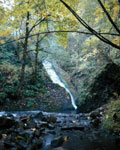 Japan Water Guard |
 |
|
| |
| ●To conserve 21st century environment and water front● Save our Earth!! |
 1.Basic of Water 2.Water Condition §1.World Water Crisis
|
Chapter 2 Water Condition
What is red tide? Red tide is the phenomenon which red color covers the surface of ocean due to overgrowth of phytoplankton. Depending on the type, the color changes reddish brown or pink. Because of nutrient enrichment, it emerges in freshwater environment such as lakes and marshes. Such type of red tide is called freshwater red tide. The factor fo red tideDue to human daily activities, daily and industrial wastewater contained lots of nitrogen and phosphorous are discharged to the ocean. Moreover, ocean becomes nutrient enrichment if the area changed to closed-area because of harbor development. Nutrient enrichment is the situation which the water contains lots of nitrogen and phosphorous that are nutrient salts for plankton. Thus, countries established environment standards and regulate the waste amount of nutrient salt though red tide occurs in many places. As the factor rather than daily and industrial wastewater, nutrient salts from non-point source, long time bottom sediment, overfeeding in farms, decrease of tideland and natural coast have been reported.
Growth mechanism of red tide Phytoplanktons which are the cause of red tide grow by nutrient salt in the ocean similar to land plants which obtain nutrient from soils. In nutrient enrichment condition, because phytoplankton increased by absorbing rich nutrient salts, it grows rapidly. Moreover, due to increase ocean temperature or other factors such as change of ecosystem balance, red tide emerges. Damage by red tide Due to red tide, large amount of oxygen are used. Because of lack of DO in the water, fishes die lack of air. Moreover, there are plankton which have poison, fishes also die by the poison, as well as that affects on land organisms and human which eat these fish. Therefore, red tide causes serious problems such as decrease of fish industry. Red tide type and organisms which causes red tide
|
| Copy right©JWG All rights reserved. |


